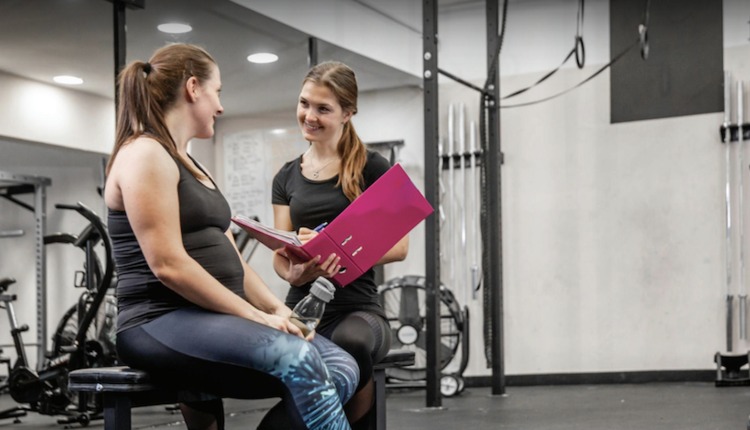| We live in a country obsessed with weight! The statistics show that two-thirds of Americans are overweight or obese with nearly one-third falling into the obese category. As personal trainers, you see this trend daily. Your goal is to educate and motivate. Clients are often fixated on seeing the numbers on the scale drop; however, you know health is not just measured in pounds. It is important to educate clients on the benefits of knowing and understanding their body composition. Health risks such as heart disease, stroke and diabetes increase with excess body fat. Also, clients with minimal muscle mass are at a greater risk of injury due to falls. Accurately assessing your client's body composition is crucial to improving their overall health and fitness. The human body is made up of a variety of components; generally, when we talk about body composition, we consider fat mass and lean mass (i.e. nonfat). For better health and appearance, your clients should have significantly more lean mass than fat mass. Clients need to understand that increasing lean muscle mass helps burn fat and is critical for controlling motion and balance. Of course, all bodies require some fat to survive as fat aids in nerve conduction, cushions organs and insulates, but too much fat increases health risks. To help clients meet their goals, a program combining a balanced diet with regular cardio and strength training exercises will result in more muscle and less fat. Having the ability to track your client's body fat percentage, fat loss and muscle gain will go far to motivate and increase success. Many methods are available to measure body fat percentage, such as skin fold calipers, which measure fold thickness with known formulas to estimate body fat percentage. Many clients find calipers painful and embarrassing. Bioelectrical impedance devices can also estimate body fat percentage, but hydration, alcohol and caffeine levels may affect the accuracy. Underwater weighing and air displacement systems are accurate but require expensive equipment and client preparation. DEXA, X-ray Computed Tomography and Magnet Resonance Imaging provide accurate images which can be used to not only measure total body composition but also show fat distribution. Unfortunately, these systems are expensive and not practical for regular tracking. Ultrasound imaging has long been used in clinical settings as a noninvasive means of measuring tissue structure. Portable, affordable hand-held ultrasound imaging devices are now available to accurately measure overall body composition as well as provide point specific measurements of fat and muscle thicknesses. These ultrasound devices provide clients with images that clearly show changes in fat and muscle. If a client is dieting and exercising, he will see fat layers shrinking and muscle growing. These images are more motivating and informative than mere numbers on a scale. Your goal as a personal trainer is to change bodies and mindsets. Not all weight is created equal -- understanding body composition is key. Education, diet, exercise and providing clients with high-tech, accurate assessment tools will help you motivate so your clients can meet their healthy potential. Heidi Stark is the CFO of IntelaMetrix, Inc. She can be contacted at 925-606- 7044 or by email: hstark@intelametrix.com. For more information, you can also visit www.bodymetrix.com. |
Related to:
Aug. 1 2011










